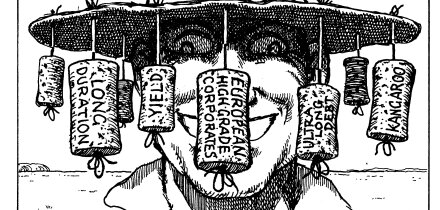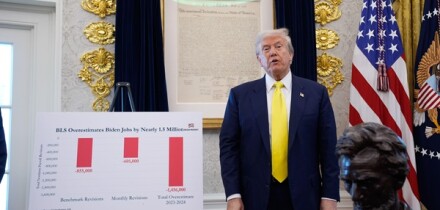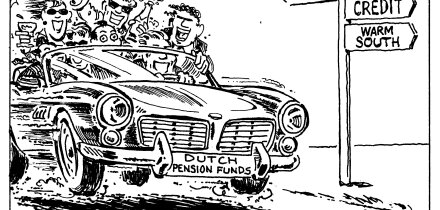Risks in long-dated foreign exchange derivatives are driven by three factors: spot and the yield curves of the home and foreign currency. These products are in general quite complex and difficult to manage. This article uses typical power reverse dual currency (PRDC) swaps to illustrate the embedded FX optionality and the associated risks.
A PRDC trade typically involves three parties: investors, an issuer and a swap house. The cash flows are as follows:
There are three key dates when important cash flows occur:
the issue date, the coupon date and the date at which the structure either matures or is called. An example, using dollar/yen detailed cash flows including coupons and notional exchanges is below:
A PRDC swap is usually structured with an embedded call. The swap house that pays out the FX linked coupons retains the right to call the entire structure on specified dates.
PRDC Optionality Analysis
This illustration is from the point of view of the swap house. In addition to the initial and final notional exchanges, on the coupon dates, the following cash flows will occur:
* Receive leg: USD LIBOR Li (for simplicity,
neglect the spread);
* Pay leg: FX linked coupon Ci
(FX call option in yen).
The swap value (in yen) of the above trade is:
Optionality For Non-Callable PRDC
Denoting DFTJPY as the yen discount factor, NUSD as the dollar notional and NJPY as the yen notional, for the non-callable swap, the swap value is:
Note that the net swap position is effectively short of a series of FX call options, and the option maturities are on the coupon dates.
Optionality For Callable PRDC
For the callable swap, the swap value at time is:
where VRollback is the swap value which includes embedded FX calls. Hence the swap value Vt will behave like a complex Bermudan put-on-call compound option.
When the PRDC swap is called, the intrinsic value resulted from the final notional exchange has the form:
Note that after the swap is called, the intrinsic value is a linear function of FX spot.
Risk Analysis
The risk sensitivities of non-callable and callable PRDC swaps are analysed and compared. The structure used for analysis is a dollar/yen PRDC swap with a maturity of 30 years. It involves the usual initial and final notional exchanges, and on coupon dates, the following cash flows occur:
* Receive leg: Three-month dollar LIBOR;
* Pay leg: FX option (annual in yen):
max(X . FXt / FX0 - Y, 0);
Where X and Y are pre-determined constants. In the callable PRDC case, the FX coupon payer has the option to call the deal on the payer coupon dates.
FX Spot Sensitivity
The FX spot profiles for non-callable and callable PRDC swaps are shown in Fig.1:
* For non-callable, as we are short calls, when spot goes up, the price goes down;
* For callable, at the lower spot the swap behaves like a put-on-call compound option. The profile there tends to be less varying. When spot goes up the swap will be called and the option exercised into the intrinsic value. From that point onwards, given the exercised intrinsic value is proportional to the spot as discussed earlier, the spot profile is a straight line upwards.
FX Volatility Sensitivity
The time bucketed FX volatility sensitivities are shown in Fig.2:
* For non-callable, the time bucketed Vega profile is typical of a series of short FX call options. At the short end, the calls are more in-the-money and the Vega is small. At the long end, given the FX forward is downwards trending (the yen rate is lower than the dollar rate), the calls are less in-the-money, hence larger Vega exposures;
* For callable, the Bermudan style compound option (put-on-call) is responsible for the wave-like Vega profile. There are two competing factors embedded in the callable PRDC swap. One is from the compounding puts, and the other is from the short call options. At the short end, the compounding puts on the long-dated calls are dominant, and they show positive Vega exposures. At the long end, the long-dated calls are more dominant, and they show negative Vega exposures.
Fig.2 shows that the time bucketed FX volatility sensitivities at the short end are very different from those at the long end. Also it is conceivable that the second order Greeks may not be negligible, indicating the shapes of the profiles may also change depending on spot. These make it difficult to hedge the long end Vega exposures using the short end FX volatility.
Interest Rate Sensitivity
The home currency, in this case yen, sensitivities are plotted in Fig.3:
* For non-callable, the sensitivities in the buckets before the maturity come from a series of FX calls. Given the corresponding forwards will increase for increased yen rates, for short calls, negative sensitivities are expected. For the bucket including the maturity date, as V0 is affected by, DFT JPY a positive yen exposure is expected;
* For callable, the sensitivity profile should be similar to that of the non-callable, although the magnitudes may differ. The callable behaves like a compound option, which tends to have lower magnitude in sensitivity.
Conclusion
In addition to the associated interest rate risks, the risk characteristics of callable long-dated FX structures can be intuitively understood by analysing the embedded complex compound options. Hedging such structures is a challenging task, in particular with regard to the long-dated FX Vega exposures.
This week's Learning Curve was written by Dong Qu, head of the quantitative products group at Abbey National Financial Products in London.





